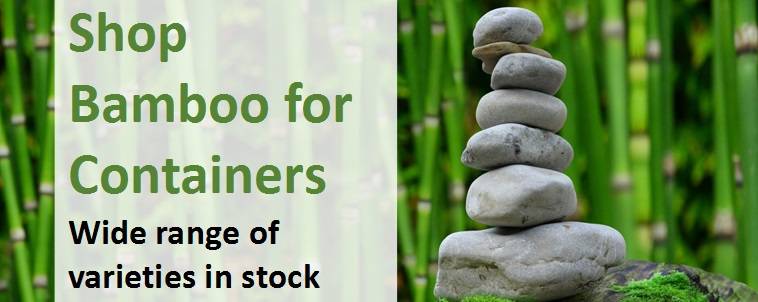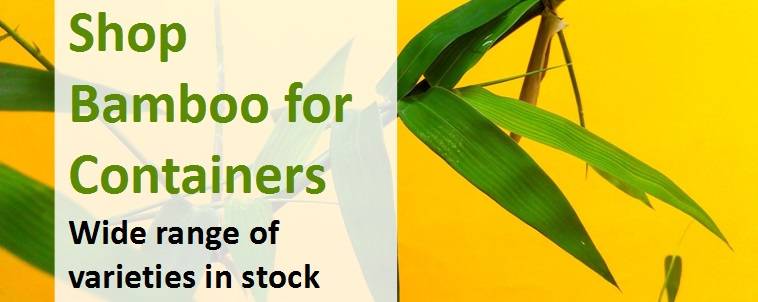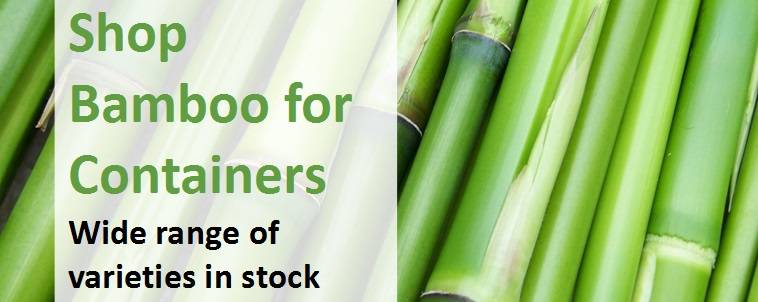How to grow bamboo in a container
Bamboos look beautiful in pots and containers. They're great for using as part of Japanese themed gardens or just for adding structure and movement to planter displays. The combination of shapes, textures and colours that can be combined with bamboo is limitless and because the container acts as a barrier you won't need to worry about them taking over your garden. Container growing also allows your bamboo to be moved around to optimise the light conditions or pop it out of view should it start to struggle. Bamboos are tall and narrow, making them ideal for balconies and patios where space is at a premium, although they will require a little more care and attention than their counterparts grown in the border.
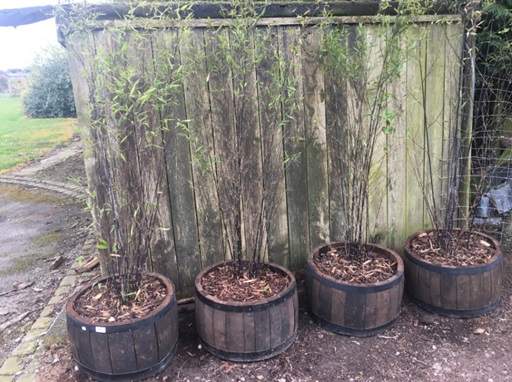
Choosing a container
- Choose a strong, sturdy container that will act as an impenetrable barrier for the bamboos roots. The roots of running bamboos in particular can break through almost anything so a metal or a robust wooden planter is really the only option for running varieties. Plastic pots are definitely out of the question.
- A container that drains well is also essential. If you have something that is otherwise ideal, drill drainage holes into the base. You'll want to position your container on top of pot feet once planted up to ensure the bottom of the roots don't lie wet. Choose glazed clay over terracotta pots if possible.
- It's also important to avoid unstable and top heavy containers that are liable to topple over. This is particularly important if you're opting for a taller growing variety that may catch the wind. Choose something that's relatively low and stable - low rectangular tubs are a good choice. Pots with a neck narrower than the body are not suitable as this will prevent you from removing the pot bound root ball without breaking the pot when your plant needs to be lifted and divided in a few years' time.
- If you're growing a variety that isn't fully hardy try to pick a container with a bit of insulation for the root system, for example something with good, thick wooden sides.
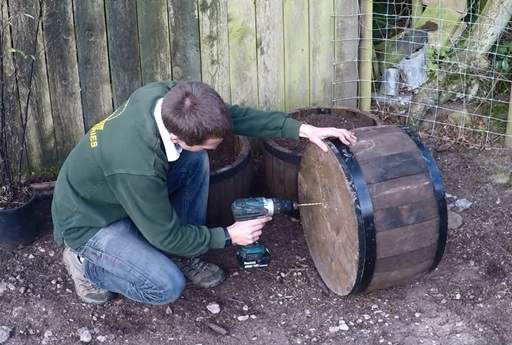
Location, Location, Location
- Once you've container is ready, move it to the spot in the garden where you want your bamboo to live before you start potting up (this will save you having to move a far heavier container once planted).
- Look to position your bamboo somewhere where it will get some protection from cold, drying winds to prevent the leaves from getting scorched. Most varieties also like some sun and typically the more sun they get, the better the colour of the bamboo stems.
- Place your container or planter on pot feet (or bricks if the weight requires) before you start planting up.
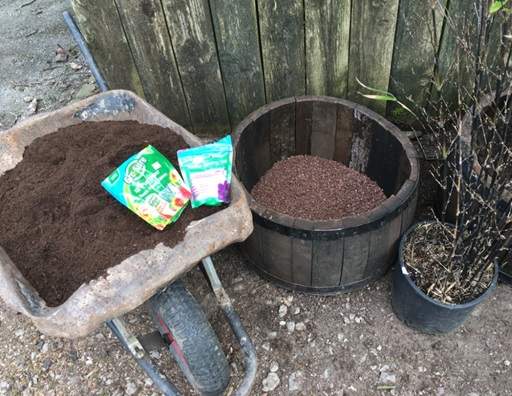
Planting Up
1) Start by putting 2-3 inches of rocks or gravel at the base of your container to improve drainage and make it more bottom heavy to prevent your plant from blowing over. Then start filling your container with the potting compost.
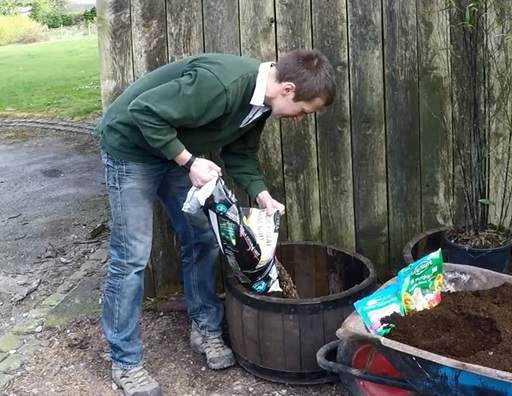
2) We recommend using either a 50/50 mix of multi-purpose peat-free potting compost and soil improver or multi-purpose compost on its own with plenty of slow release fertiliser granules and water retaining gel built in. This will help give your bamboo plants the extra nutrients they need to succeed as well as improving water retention.
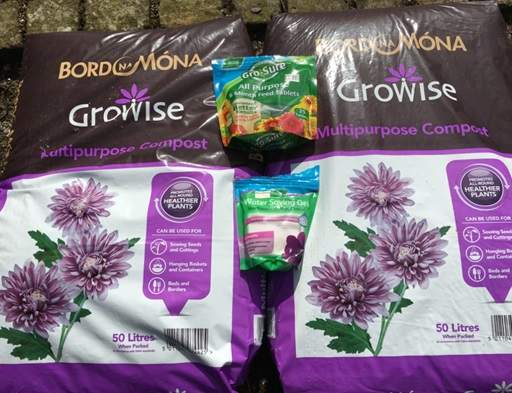
3) Take your bamboo plant out of the pot and inspect the roots. Bamboo normally has a dense root system that should be loosened before planting. Get your thumb into the base if you can and tease the roots out to help stimulate fresh root growth once planted.
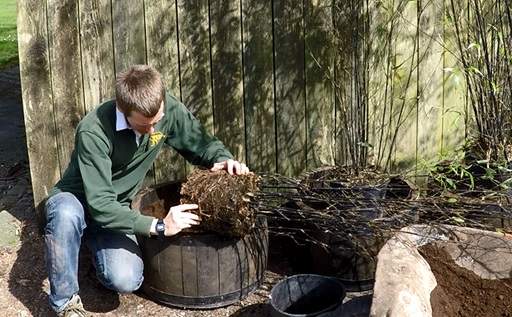
4) Give the rootball a good soaking before planting, ideally dunking it in a large bucket of water for 20 minutes so the water seeps right into the centre of the rootball.
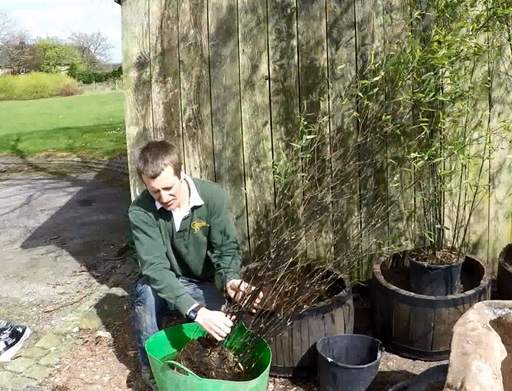
5) When you're ready, put your plant into the container setting the depth so that 2-3cm (1 inch) of soil will cover the original surface. Backfill with the rest of your potting mix and firm down to eliminate air pockets.
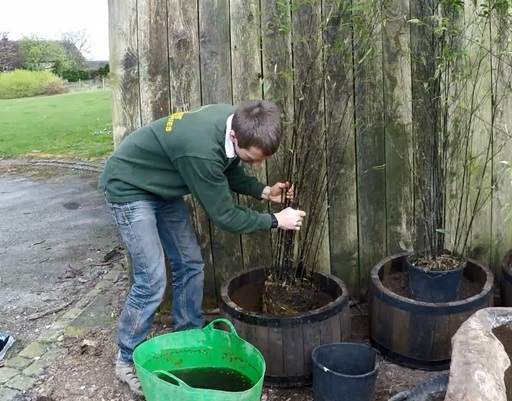
6) Mulch with a 2 inch (5cm) layer of bark around the base to aid water retention.
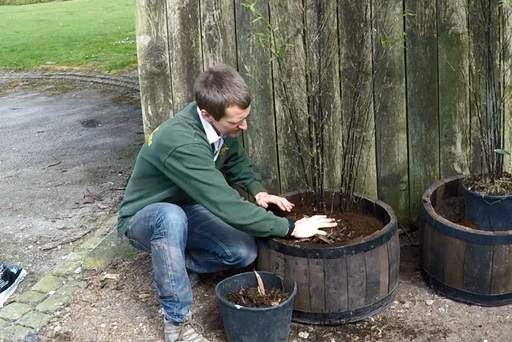
Watering and Feeding
- Bamboo plants grown in containers should be watered regularly as the restricted root space will mean they dry out more quickly.
- Water every other day in the height of the summer, reducing the frequency in the autumn, and apply a balanced liquid feed once a month over the summer.
- Don't be surprised if container grown plants grow shorter with narrower canes that the same varieties in the border. The size of the canes is supported by the size of the rootball and because the growing area of the roots is limited in a container, the growth potential of the canes is also limited.
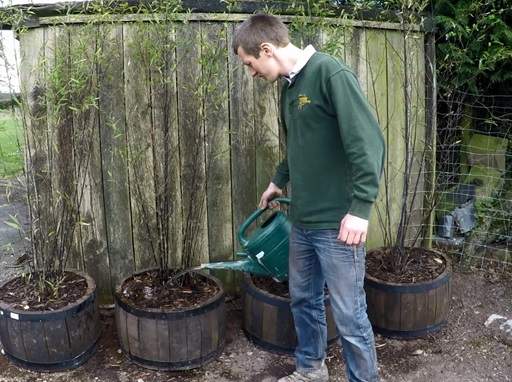
Frost Protection
- Any given variety of bamboo will be less hardy when grown in a container than it would be in the border due to the stress of the constrained growing environment. Container grown bamboo also does not have the insulating effect of the soil surrounding the roots during the winter, making it naturally more exposed.
- Protect the canes and roots from frost and ice in winter by wrapping a few layers of horticultural fleece, bubble wrap or burlap loosely around the container and canes when frost is forecast. Alternatively, bring your plants indoors until the risk of frost has passed.
Repotting
- As with any plant, bamboos grown in containers eventually become pot bound and need to be lifted, divided and repotted. You'll need to do this every 2 to 5 years in spring, before the main growing season. If you lift and divide in the summer you're at risk of killing your plants - so wait until the autumn if the following spring seems too far away.
- If bamboos stay pot bound for too long they will inevitably suffer as there are less and less nutrients available to support a growing plant. If you notice the leaves becoming brown and foliage cover becoming less dense, it's probably time to re-pot and give your plants a boost with some fresh compost.
- Water your plants well the night before you plan to lift and divide to minimise transplant shock.
- When you're ready to lift and divide, gently ease the plant out of its container being careful not to damage the root system in the process.
- Shake any excess soil from the root ball and rinse with water to reveal the root system.
- Inspect for natural points of division. We usually recommend splitting containerised rhizomes into two or three pieces, looking to remove any dead, damaged or rotting parts of the root system in the process.
- If you prefer to dispose of the extra rhizome sections, allow them to dry out and die before discarding in the compost pile, otherwise they may set root in the nutrient-rich environment of your compost heap.
- You can choose to plant the extra rhizome sections in another container or out into a garden border. If container growing, use fresh general purpose compost mixed with water retaining gel and multi-purpose fertiliser granules.
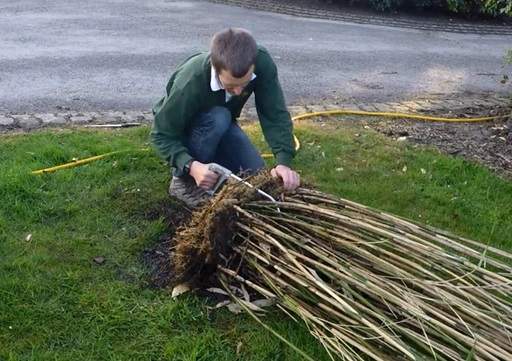
Share this page:

